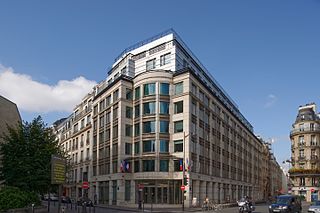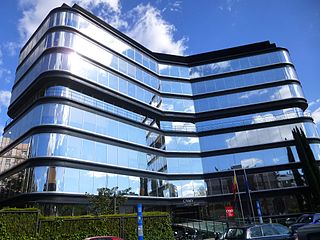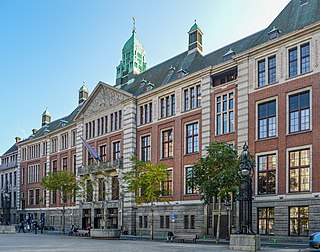Related Research Articles

Markets in Financial Instruments Directive 2014, commonly known as MiFID 2, is a legal act of the European Union (EU). Together with Regulation No 600/2014 it provides a legal framework for securities markets, investment intermediaries, in addition to trading venues. The directive provides harmonised regulation for investment services of the member states of the European Economic Area — the EU member states plus Iceland, Norway and Liechtenstein. Its main objectives are to increase competition and investor protection, as well as level the playing field for market participants in investment services. It repeals Directive 2004/39/EC.
The Lamfalussy process is an approach to the development of financial service industry regulations used by the European Union. Originally developed in March 2001, the process is named after the chair of the EU advisory committee that created it, Alexandre Lamfalussy. It is composed of four "levels", each focusing on a specific stage of the implementation of legislation.

The Autorité des marchés financiers (AMF) is the securities commission in France. The AMF is an independent public body that is responsible for safeguarding investments in financial instruments and in all other savings and investments, as well as maintaining orderly financial markets.

The Portuguese Securities Market Commission, also known by its initials as "CMVM", is the Portuguese financial regulator that supervises and regulates securities and other financial instruments and activities of all those who operate within said markets.

The Financial Supervisory Commission is an independent government agency subordinate to the Executive Yuan of the Republic of China (Taiwan). It is responsible for regulating securities markets, banking, and the insurance sector.
The Netherlands Authority for the Financial Markets is the financial services regulatory authority for the Netherlands. Its role is comparable to the role of the SEC in the United States.

The European Insurance and Occupational Pensions Authority (EIOPA) is a European Union financial regulatory institution that replaced the Committee of European Insurance and Occupational Pensions Supervisors (CEIOPS). It is established under EU Regulation 1094/2010.
The Committee of European Banking Supervisors (CEBS) was an independent advisory group on banking supervision in the European Union (EU), active from its establishment in 2004 to its replacement on 1 January 2011 by the European Banking Authority (EBA) which took over all its tasks and responsibilities following Regulation (EC) No. 1093/2010 of the European Parliament and of the Council of 24 November 2010.

The National Securities Market Commission is the Spanish government agency responsible for the financial regulation of the securities markets in Spain. It is an independent agency that falls under the Ministry of Economy.

The Danish Financial Supervisory Authority (DFSA) is the financial regulatory authority of the Danish government responsible for the regulation of financial markets in Denmark.
The European System of Financial Supervision (ESFS) is the framework for financial supervision in the European Union that has been in operation since 2011. The system consists of the European Supervisory Authorities (ESAs), the European Systemic Risk Board, the Joint Committee of the European Supervisory Authorities, and the national supervisory authorities of EU member states. It was proposed by the European Commission in 2009 in response to the financial crisis of 2007–08.
The European Securities and Markets Authority (ESMA) is an independent European Union Authority located in Paris.

The European Banking Authority (EBA) is a regulatory agency of the European Union headquartered in La Défense, Île-de-France. Its activities include conducting stress tests on European banks to increase transparency in the European financial system and identifying weaknesses in banks' capital structures.
Foreign exchange regulation is a form of financial regulation specifically aimed at the Forex market that is decentralized and operates with no central exchange or clearing house. Due to its decentralized and global nature, the foreign exchange market has been more prone to foreign exchange fraud and has been less regulated than other financial markets.
Eddy Wymeersch is former Chair of the Committee of European Securities Regulators (CESR), former Chairman of the Supervisory Board of the Banking, Finance and Insurance Commission (Belgium), Brussels; Chairman of the European Regional Committee and Member of the Executive Committee and of the Technical Committee of the International Organization of Securities Commissions.
A financial regulatory authority or financial supervisory authority is a public authority whose role is to ensure the proper implementation of financial regulation within its scope of responsibility.

The Austrian Financial Market Authority is Austria's integrated financial regulatory authority and has been its national competent authority within European Banking Supervision since 2014. It is responsible for the supervision of credit institutions, payment institutions, insurance companies, pension funds, Fund managers, licensed securities service providers, and stock exchanges.
The Financial Markets Authority of the West African Monetary Union is a supranational markets regulator established in 1996 and based in Abidjan, Ivory Coast. It is the single securities authority for the eight countries of the West African Monetary Union, namely Benin, Burkina Faso, Guinea Bissau, Ivory Coast, Mali, Niger, Senegal, and Togo. It was known from 1996 to 2020 as the Regional Council for Public Savings and Financial Markets.
The Central African Financial Market Supervisory Commission is a supranational markets regulator established in 2019 and based in Libreville, Gabon. It is the single securities authority for the six countries of the Economic and Monetary Community of Central Africa, namely Cameroon, the Central African Republic, Chad, Equatorial Guinea, Gabon, and the Republic of the Congo.

EuroCTPB.V. is a joint venture of 14 bourses, intending to tender for the provision of a consolidated tape (CT) for financial trading within the European Union (EU). The selection process, arranged by the European Securities and Markets Authority (ESMA), is scheduled to be finalised in 2025. This forms part of the European Commission's Capital Markets Union.
References
- ↑ Commission des Opérations de Bourse, Rapport au Président de la République 1990 (PDF)
- ↑ Fabrice Demarigny (2000), "The Forum of European Securities Commissions (Fesco): an Answer to the Needs of a European Single Market for Financial Services", Revue d'économie financière (60): 125–133
- ↑ Decision 2001/527/EC
- ↑ CESR Report 2001-2002 (PDF)
- ↑ 2003 Annual Report of the Committee of European Securities Regulators to the European Commission / European Parliament / ECOFIN Council (PDF)
- ↑ CESR Annual Report 2010 (PDF)